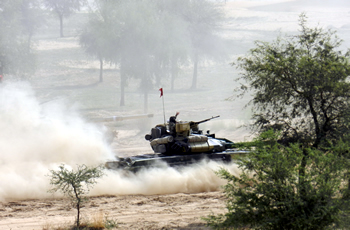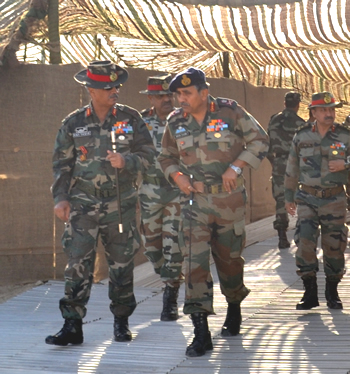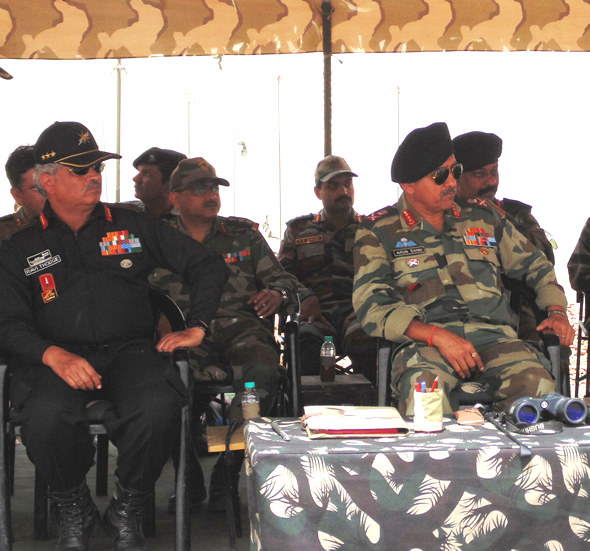INDIAN ARMED FORCES CHIEFS ON OUR RELENTLESS AND FOCUSED PUBLISHING EFFORTS

The insightful articles, inspiring narrations and analytical perspectives presented by the Editorial Team, establish an alluring connect with the reader. My compliments and best wishes to SP Guide Publications.

"Over the past 60 years, the growth of SP Guide Publications has mirrored the rising stature of Indian Navy. Its well-researched and informative magazines on Defence and Aerospace sector have served to shape an educated opinion of our military personnel, policy makers and the public alike. I wish SP's Publication team continued success, fair winds and following seas in all future endeavour!"

Since, its inception in 1964, SP Guide Publications has consistently demonstrated commitment to high-quality journalism in the aerospace and defence sectors, earning a well-deserved reputation as Asia's largest media house in this domain. I wish SP Guide Publications continued success in its pursuit of excellence.
- Appointments Committee of Cabinet approves one-month extension in service of Chief of the Army Staff
- Admiral Dinesh K. Tripathi assumes Command of the Indian Navy as 26th Chief of the Naval Staff
- Prime Minister witnesses 'Bharat Shakti' – a Tri-Services Firing and Manoeuvre Exercise in Pokhran, Rajasthan
- Interim Defence Budget 2024-25 — An Analysis
- Union Defence budget 2024
- Prime Minister Modi Commemorates Indian Navy Day in a Grand Ceremony
Exercise Sarvada Vijay



Exercise ‘Sarvada Vijay’ (Always Victorious) was held at Mahajan field firing ranges on May 3-4, 2014. The overall aim of the exercise was to practise conventional crossborder thrusts into enemy territory. In the joint operation, the Indian Air Force also took part in the exercise. The exercise involved about 20,000 troops, 200 tanks, 500 infantry combat vehicles and howitzers and also involves the Headquarters of the Mathura-based Strike Corps with some support elements, as per the Army sources. The exercise was based on the concept of a divisional battle group delivering a lethal punch in a swift offensive operation across the international border. After Operation Parakram in 2002, which exposed the weaknesses in the build-up of strike forces and the slow troop mobilisation along the border, the Army reorganised its formations along the western front to ensure the capability to deliver a more effective lethal punch, if required.
Jaipur-based Headquarters South-Western Command was created in 2005 as the 1.18-million-strong Army’s sixth and newest operational command. While 1 Strike Corps falls under the South-Western Command, two other such “attack” formations are 2 Corps (Ambala) under the Western Army Command at Chandimandir and 21 Corps (Bhopal) under the Southern Army Command in Pune. Earlier, Army had carried out similar exercises like ‘Vijayee Bhava’, ‘Sudarshan Shakti’ and ‘Shoorveer’ on the same lines.
Experts said future wars are likely to be localised in nature and capturing of maximum high value enemy territory in swift and daring operations across the IB by relatively smaller forces with adequate firepower will give an edge to the attacker.
Lt General Arun Kumar Sahni witnessed the conduct of exercise ‘Sarvada Vijay’ in Rajasthan. The Army Commander was initially briefed on the training aspects and later witnessed the conduct of the exercise in the field.
The exercise was conducted as part of routine training where a designated Army formation was practised in its operational role and made to hone its war-fighting skills. Composite infantry and mechanised forces practised swift manoeuvres as part of the air-land battle. Networked radars, unmanned aerial vehicles and aerial surveillance platforms ensured continuous flow of information resulting in battlefield transparency which enabled commanders to assess and suitably modify their operational plans to meet the emerging challenges. Mobile communication systems integrated with terrestrial network provided efficient communication during manoeuvres.
The Army Commander also reviewed the command and control structures that facilitate synergy between the Army and Air Force in launching a coordinated air-land battle. He spent two days with the Strike Corps and its formations. He specifically reviewed the ability of a strike force to orchestrate battle in a network-centric environment. Due to the scale of the exercise and its closeness to the international border, Pakistan was also informed regarding the exercise.








